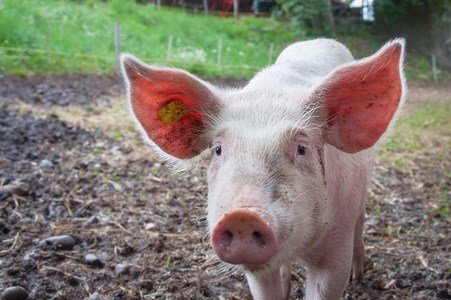Tomato pomace is the primary waste biomass that results from the industrial processing of tomato. Although industrial processing technology determines variations in the composition of tomato pomace, it is composed of seeds, peels and small amounts of residual pulp; and it is generally rich in fiber, as well as in protein and fat that are present in the seeds.
Moreover, it is a by-product rich in essential amino acids, unsaturated fatty acids and carotenoids. However, the effect of dietary tomato pomace on the quality traits of pork meat has been poorly investigated. Therefore, the aim of the present study was to assess the inclusion of 15% tomato pomace in pig diets as a viable strategy for replacing conventional ingredients (such as corn) of a commercial concentrate-based diet, and also for improving meat quality traits with particular emphasis on the fatty acid composition and oxidative stability.
For that purpose, a total of 16 Nero Siciliano male pigs were selected at 7 months of age (initial body weight 42.7 ± 2.31 kg) and randomly assigned in individual pens to two feeding treatments: control diet (CON; n = 8) or tomato diet (TOM; n = 8). During the 86-day experimental period, the CON group was fed exclusively a corn and barley-based commercial diet, while the diet given to the TOM group included 15% tomato pomace in replacement of an equal amount of corn.
Results showed that dietary treatment with tomato pomace did not affect growth performances. The TOM diet reduced intramuscular fat, saturated fatty acids (SFA) and monounsaturated fatty acids (MUFA) content, while increasing the n-6:n-3 ratio in meat.
Moreover, TOM diet increased the concentration of polyunsaturated fatty acids (PUFA), PUFA n-3, PUFA n-6 and the n-6:n-3 ratio. The instrumental color descriptors of backfat were unaffected by diet. The TOM diet increased deposition of retinol in meat but did not affect oxidative stability parameters measured in fresh meat and meat homogenates with pro-oxidant catalysts.
In conclusion, replacing 15% corn with tomato pomace did not affect animal performance, suggesting that tomato pomace could be potentially included in diets for pigs at higher levels. As for meat composition, TOM diet increased the concentration of vitamin A in meat, reduced the deposition of intramuscular fat and increased the concentration of PUFA.
Biondi L, Luciano G, Cutello D, Natalello A, Mattioli S, Priolo A, Lanza M, Morbidini L, Gallo A, Valenti B. (2020). Meat quality from pigs fed tomato processing waste. Meat science, 159, 107940. https://doi.org/10.1016/j.meatsci.2019.107940
